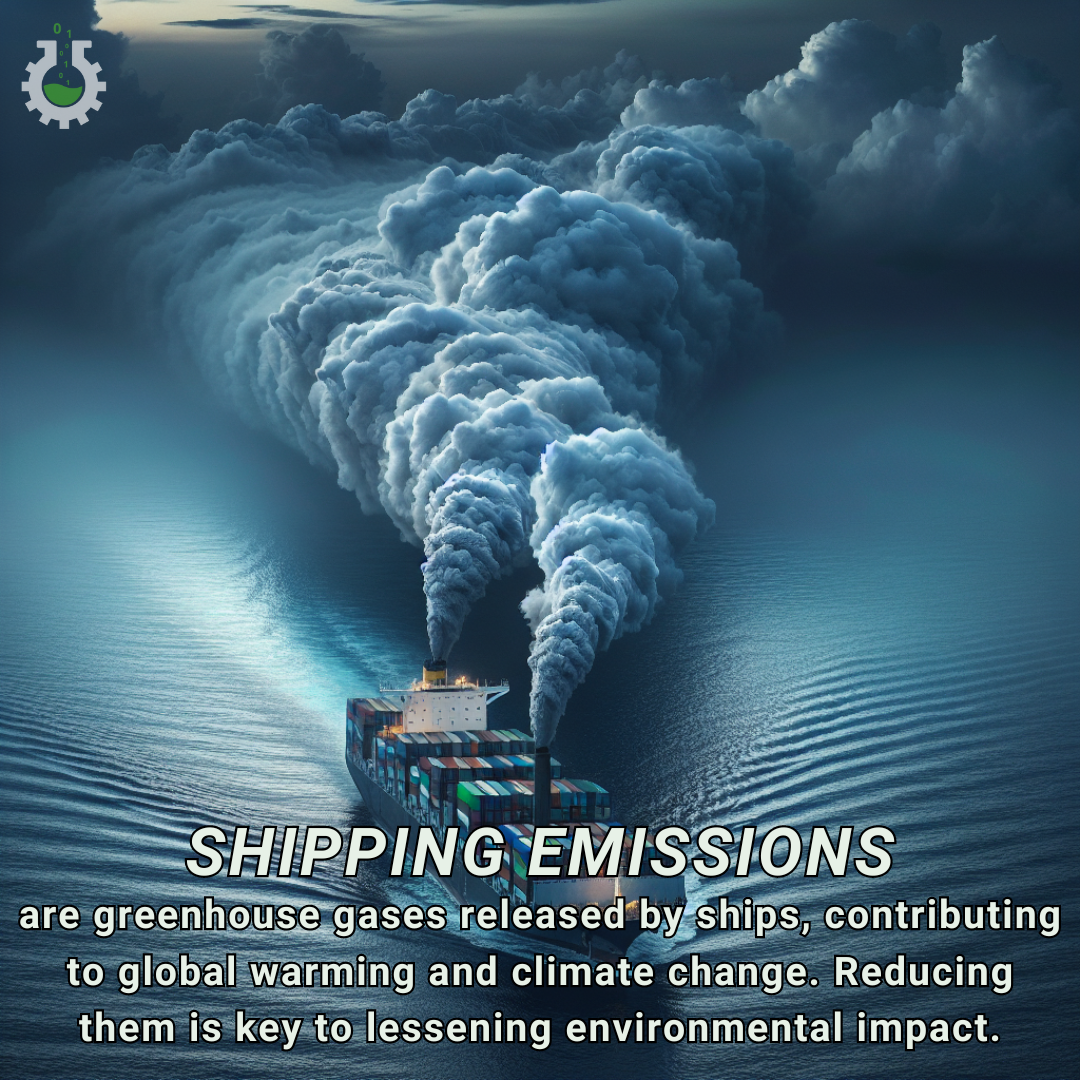October 8, 2024
Climate Change Poster Collection of the Week – Shipping Emissions
Book a Demo
This week’s Climate Change Poster Collection highlights Shipping Emissions, refer to the pollutants released into the atmosphere by vessels engaged in the transportation of goods across the world’s oceans and waterways. These emissions are primarily composed of greenhouse gases such as carbon dioxide (CO2), nitrogen oxides (NOx), sulfur oxides (SOx), and particulate matter, including black carbon. The global shipping industry serves as the backbone of international trade, responsible for transporting approximately 90% of all goods, from raw materials to finished products. However, this vital economic activity comes at a significant environmental cost, contributing substantially to climate change and its associated impacts.
The primary contributor to shipping emissions is the combustion of heavy fuel oil, a low-grade, high-sulfur fossil fuel that powers most of the world’s commercial ships. When burned, this fuel releases large quantities of CO2, a major greenhouse gas that traps heat in the Earth’s atmosphere, driving global warming. In fact, if the shipping industry were a country, it would rank among the top ten largest emitters of carbon dioxide globally. This makes it a critical area of concern in the battle against climate change, as the industry’s emissions are projected to rise significantly if left unchecked, given the increasing demand for international trade and the expected growth in the number of ships on the seas.
Beyond carbon dioxide, shipping emissions include nitrogen oxides and sulfur oxides, which contribute to the formation of fine particulate matter and ground-level ozone. These pollutants pose serious health risks to humans, leading to respiratory and cardiovascular problems, and they also contribute to environmental issues such as acid rain, which can harm terrestrial and aquatic ecosystems. The deposition of acid rain can lead to the acidification of soils and water bodies, adversely affecting plant and animal life and reducing biodiversity. Moreover, nitrogen oxides play a role in the formation of tropospheric ozone, a potent greenhouse gas that further exacerbates global warming.
One of the more insidious effects of shipping emissions is the production of black carbon, a component of particulate matter that absorbs sunlight and directly warms the atmosphere. Black carbon is particularly concerning in polar regions, where it settles on ice and snow, reducing their albedo (reflectivity). This accelerates melting and contributes to the loss of polar ice, which is a critical regulator of the Earth’s climate. The melting of polar ice not only contributes to sea-level rise, threatening coastal communities and ecosystems, but also disrupts global ocean circulation patterns, which can have far-reaching effects on weather and climate systems worldwide.
Furthermore, the shipping industry is a significant source of methane emissions, particularly from liquefied natural gas (LNG) carriers. Methane is a potent greenhouse gas with a global warming potential many times greater than that of carbon dioxide over a short time frame. Methane emissions occur during the extraction, processing, and transport of LNG, and any leaks during these processes can contribute significantly to the greenhouse effect. The impact of shipping emissions is exacerbated by the industry’s rapid growth, driven by increasing global demand for goods and the expansion of international trade routes.
Efforts are underway to reduce the environmental impact of shipping through the adoption of cleaner fuels, improved energy efficiency, and the development of alternative propulsion technologies such as wind-assisted and electric ships. The International Maritime Organization (IMO) has set targets to reduce the carbon intensity of international shipping and is working to implement measures that promote the use of low-sulfur fuels and the adoption of energy-efficient ship designs. However, the transition to a more sustainable shipping industry is complex and requires coordinated global action, stringent regulatory frameworks, and significant investment in research and development. Collaboration among governments, industry stakeholders, and environmental organizations is essential to drive innovation and implement effective solutions.
Addressing shipping emissions is crucial not only for the health of our oceans and the communities that depend on them but also for the broader fight against climate change. Reducing emissions from this sector could play a pivotal role in achieving international climate targets, such as those outlined in the Paris Agreement, and ensuring a sustainable future for generations to come. The challenge lies in balancing the economic benefits of global trade with the need to protect our planet’s climate and ecosystems. By prioritizing sustainability and embracing technological advancements, the shipping industry can transform from a significant emitter to a leader in the transition to a low-carbon economy, setting an example for other sectors to follow.
Discover an inspiring collection of climate change poster.



